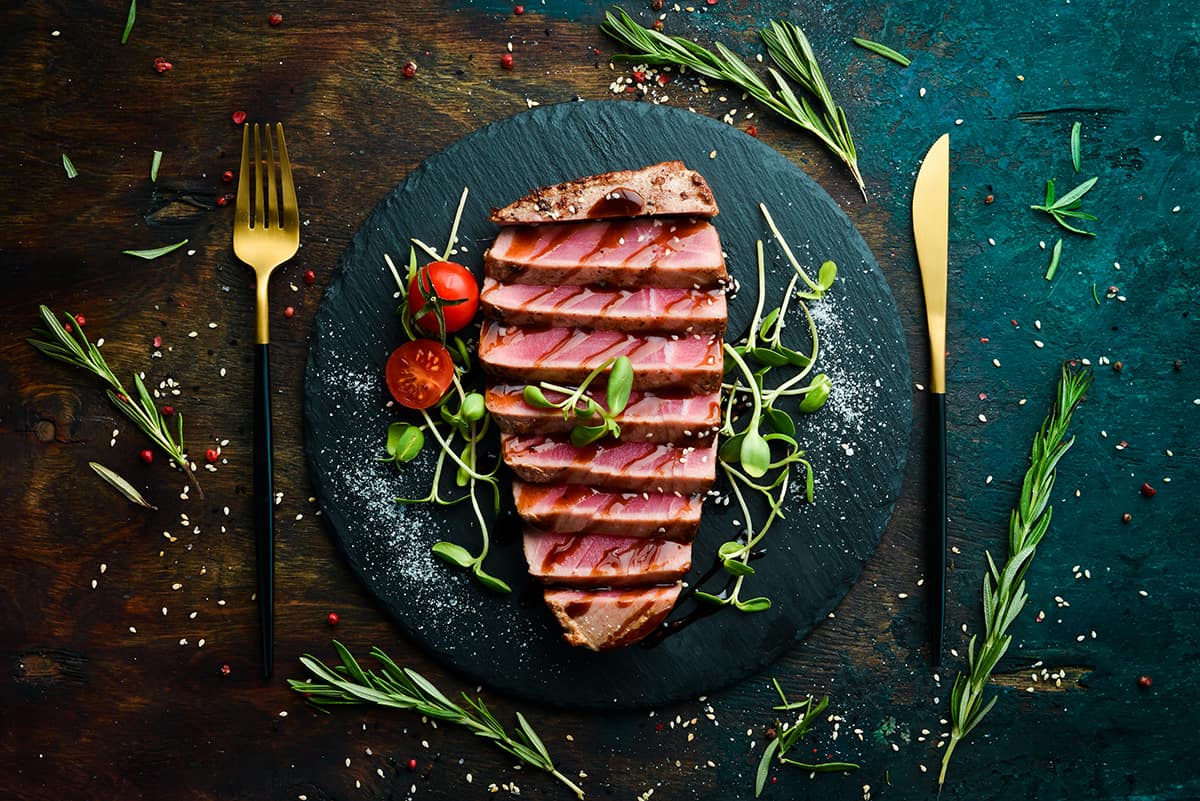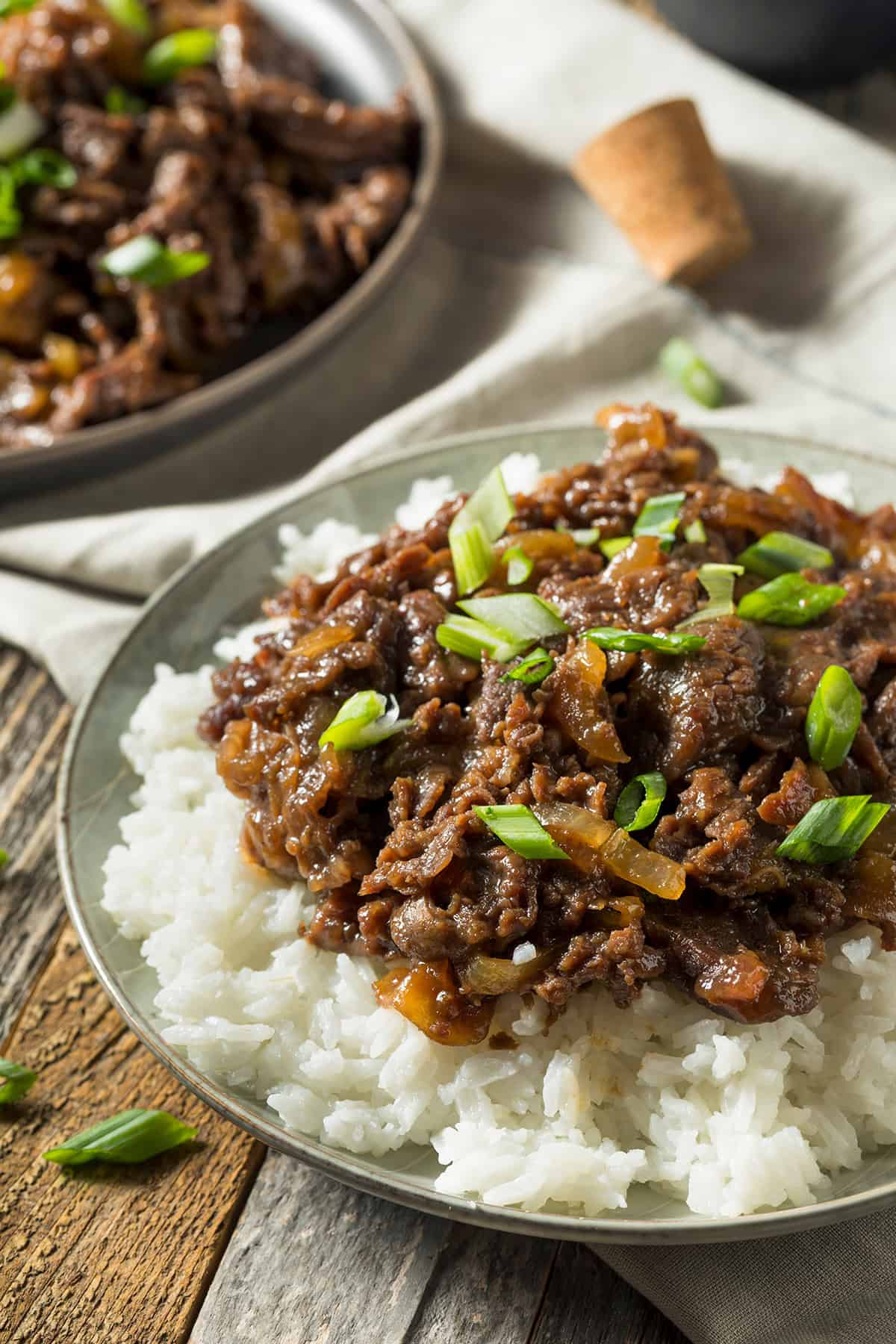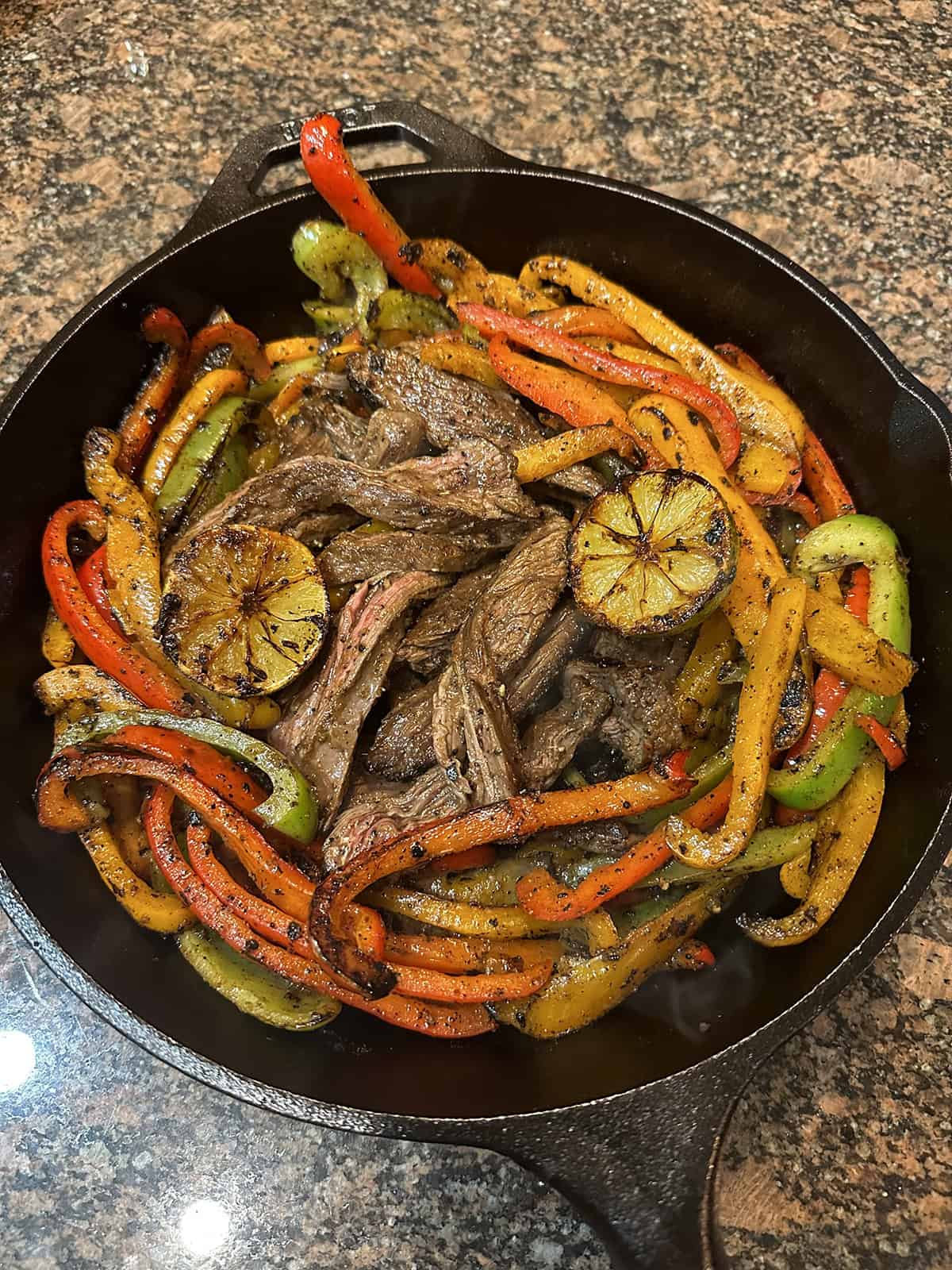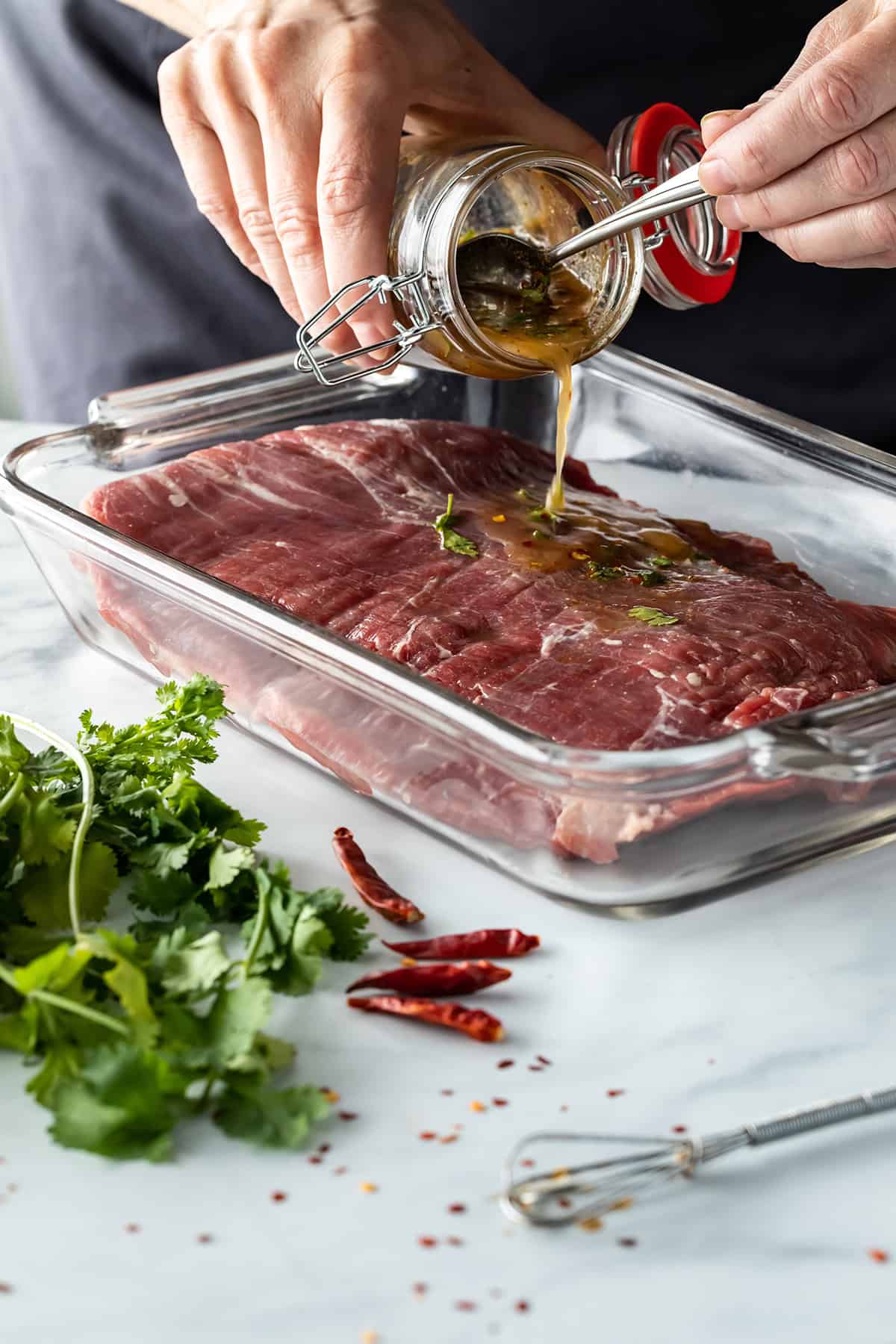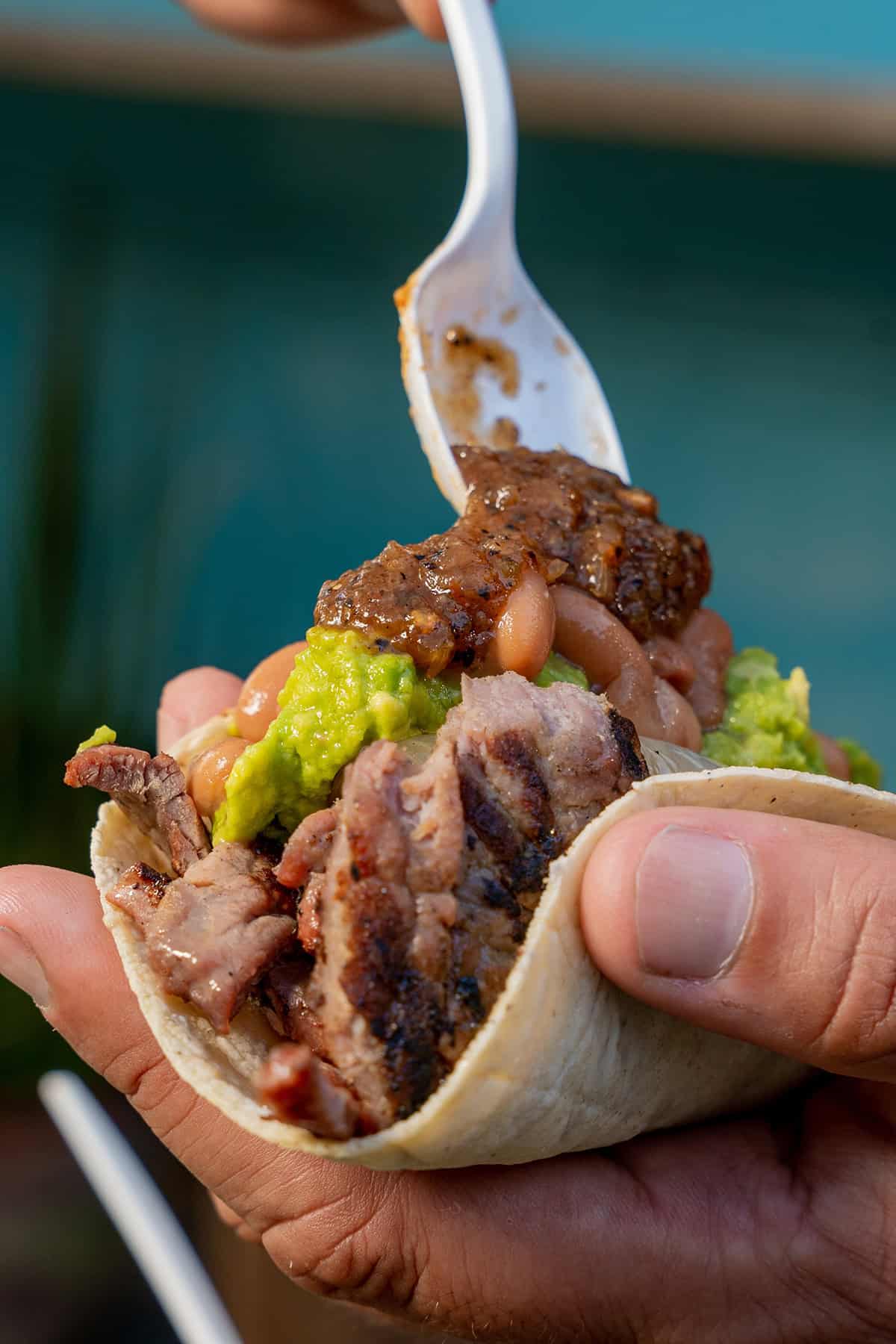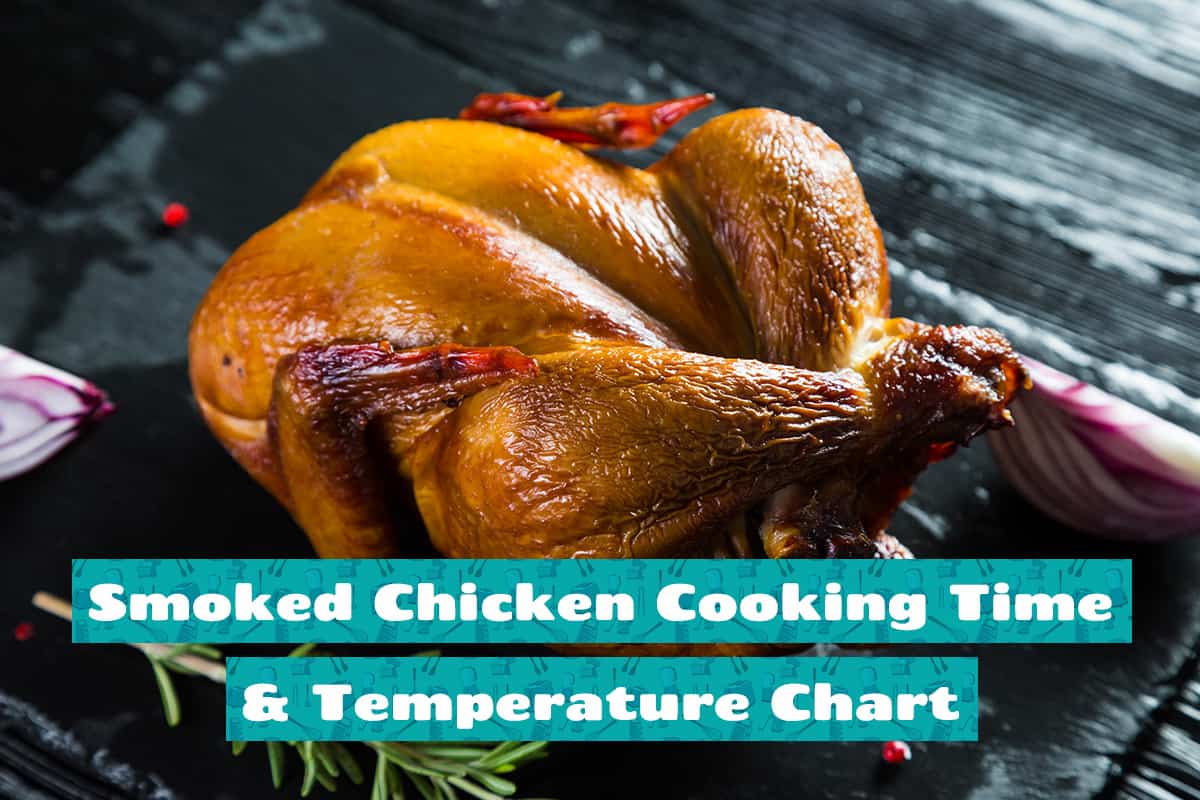Tuna steak, with its rich flavor and dense texture, is a true culinary delight. Achieving a delectable taste and succulent finish requires a delicate balance of factors, with temperature playing a major role in its overall outcome.
This guide will explore the intriguing world of tuna steak temperature. We will provide a detailed temperature chart, explain how to choose the right steak and talk about the best cooking techniques.
The Tuna Steak Temperature Chart
Cooking tuna steak to perfection largely depends on following the right temperature guidelines. This ensures the steak’s doneness aligns with your preference, whether you love your steak rare, medium, or well-done.
Breaking Down the Temperature Chart
The temperature range for cooking tuna steak is typically between 110°F (43°C) and 145°F (63°C). Here’s what the different temperature points represent:
| Doneness | Internal Temperature | Description |
| Rare | 110°F – 115°F
(43°C – 46°C) |
Mostly raw, with a slightly cooked outer layer |
| Medium-rare | 115°F – 125°F
(46°C – 52°C) |
Primarily pink with a touch of brown towards the outside |
| Medium | 125°F – 130°F
(52°C – 54°C) |
A balance between raw and well-cooked, mostly pink with some brown |
| Medium-well | 130°F – 140°F
(54°C – 60°C) |
Mostly brown with a hint of pink |
| Well-done | 140°F – 145°F
(60°C – 63°C) |
Fully cooked steak with no pink visible, brown throughout |
Factors Influencing Cooking Time
The three main factors that will affect the outcome of your tuna steak are as follows:
- Size: Larger steaks naturally take longer to cook through than smaller ones.
- Thickness: A thicker steak requires more time to reach the desired internal temperature compared to a thinner one. For steaks thicker than 1.5 inches, consider searing the outside and then finishing in the oven to ensure even cooking.
- Marination: Marinated steaks may cook a bit faster as the marinade can help conduct heat. However, marinades often contain sugar, which can cause the outside of your steak to brown or burn before the inside is fully cooked. To prevent this, remove excess marinade before cooking and monitor the steak carefully.
Cooking Techniques and Their Impact on Temperature
Each cooking technique has its unique charm and application. Here, we’ll provide guidelines on how to perform the different techniques when preparing tuna steak and what temperatures to aim for.
Grilling Tuna Steak
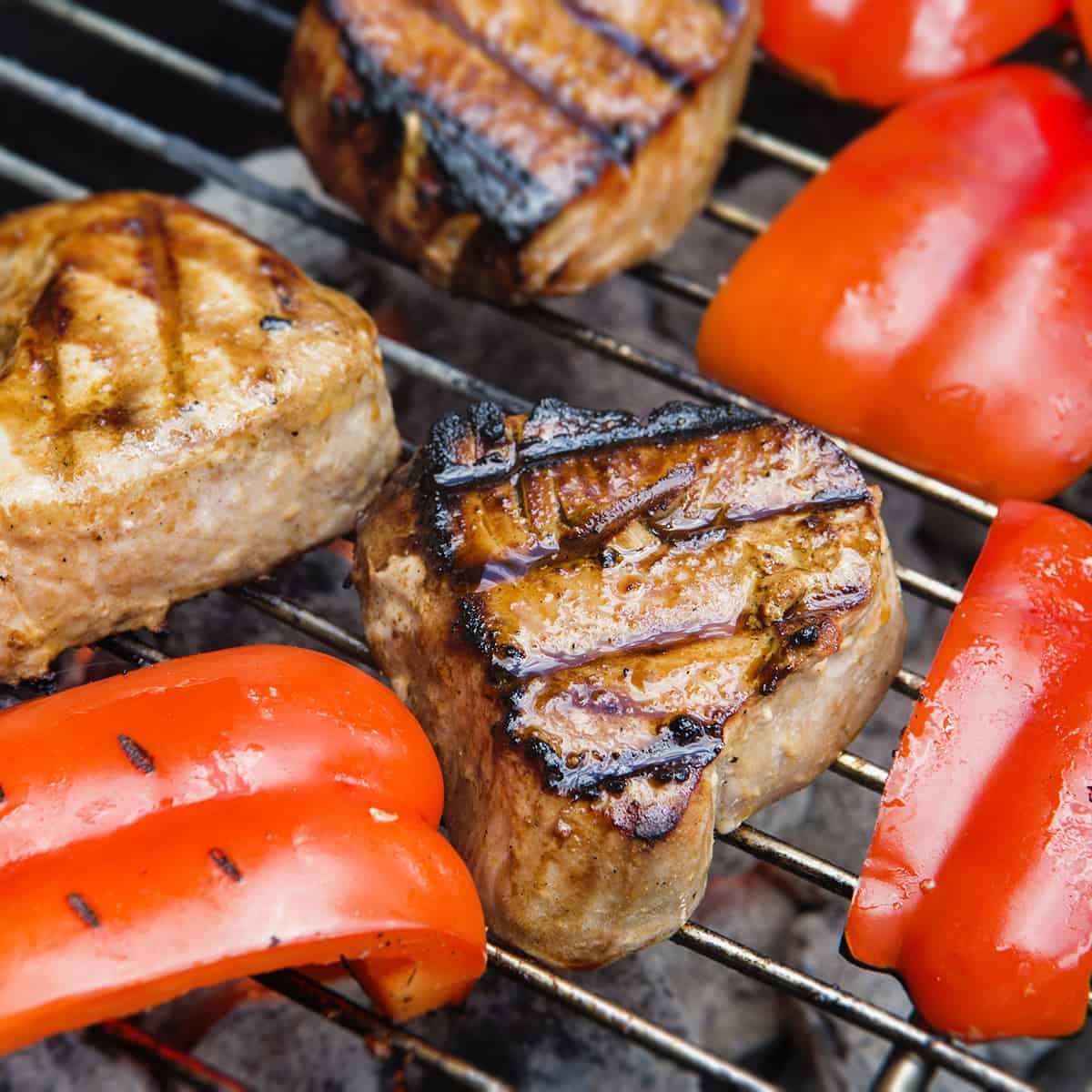
Grilling offers a distinct flavor and beautiful grill marks. To grill tuna steak:
- Preheat your grill to high heat, around 450°F to 500°F. A higher temperature ensures a good sear and helps keep the inside rare to medium rare.
- Brush both sides of the steak with oil and season as desired.
- Place the steak on the grill and cook each side for 2-3 minutes for rare to medium-rare doneness or longer if you prefer more well-done steak.
Searing Tuna Steak
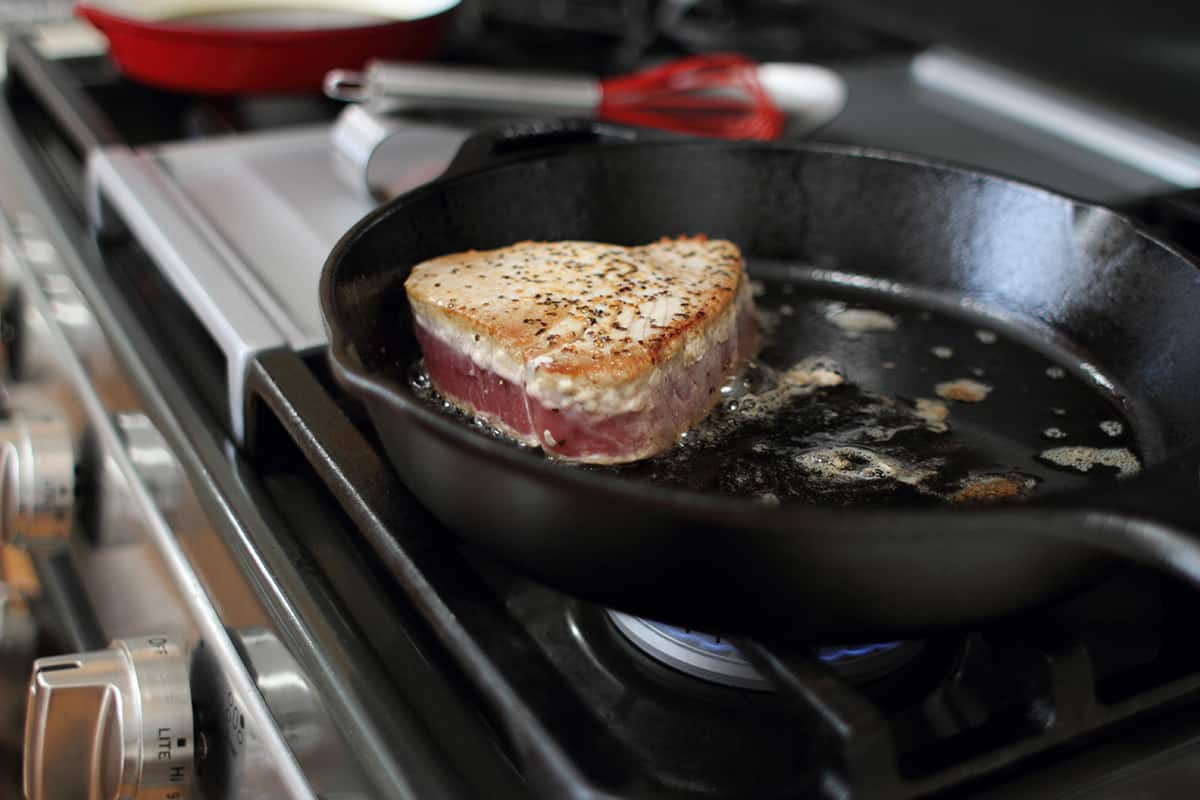
Searing is done by blasting your tuna steak in a super-heated environment to quickly produce a crusty exterior while preserving the tender and juicy interior. This technique is usually only done after cooking your steak to the desired interior temp.
- Start by heating a skillet or frying pan over medium-high heat. A non-stick pan can work, but a cast-iron skillet is ideal for its heat retention.
- Add a small amount of oil and let it heat until it shimmers.
- Place your seasoned steak in the pan and sear each side for about 2-3 minutes for a rare steak. Add more time for higher levels of doneness.
Baking Tuna Steak
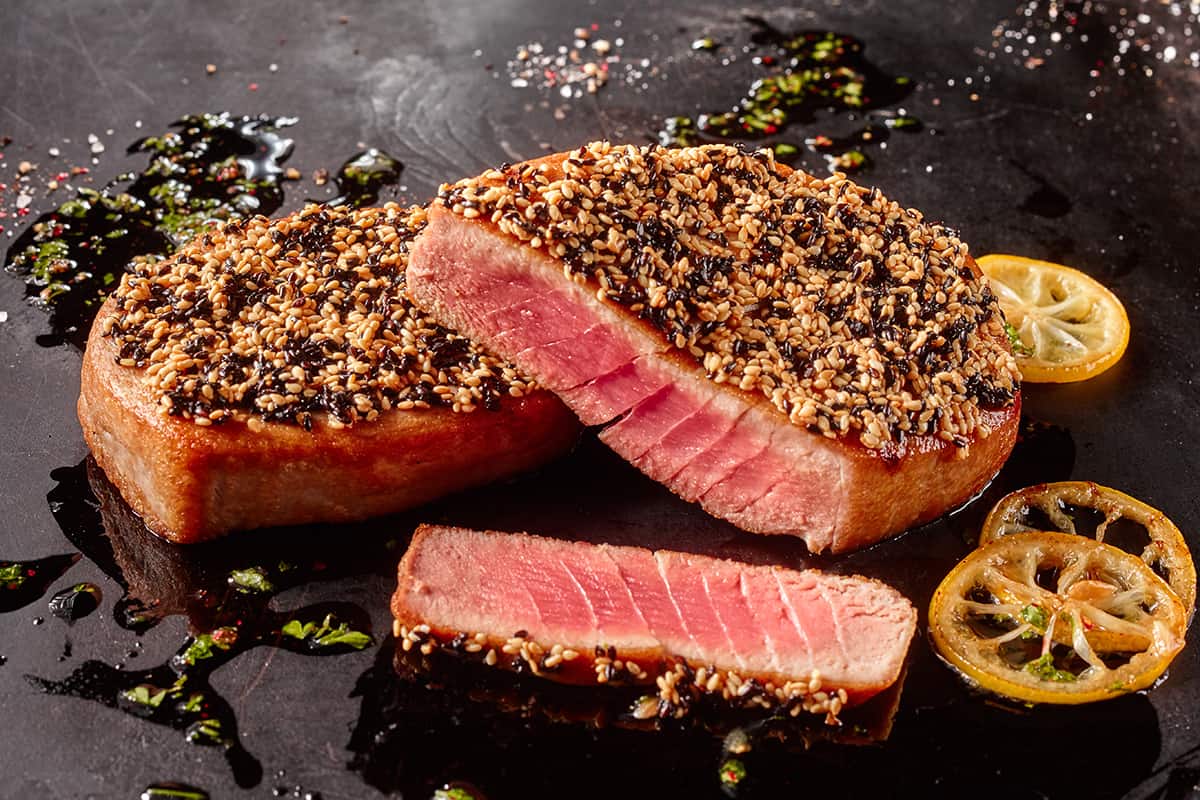
If you’re working with thicker steaks, baking is one of the more reliable ways to cook them evenly. Searing afterward will help produce a delicious crust.
- Preheat your oven to 450°F. Baking requires a high temperature to ensure the steak cooks evenly without drying out.
- Season your steak and place it on a baking tray lined with foil or parchment paper.
- Bake for 4-6 minutes on each side for medium-rare, regularly checking the internal temperature.
- If you like your steak more well-done, lower the temperature to 350°F after the initial sear and cook to the desired doneness.
Choosing the Right Tuna Steak
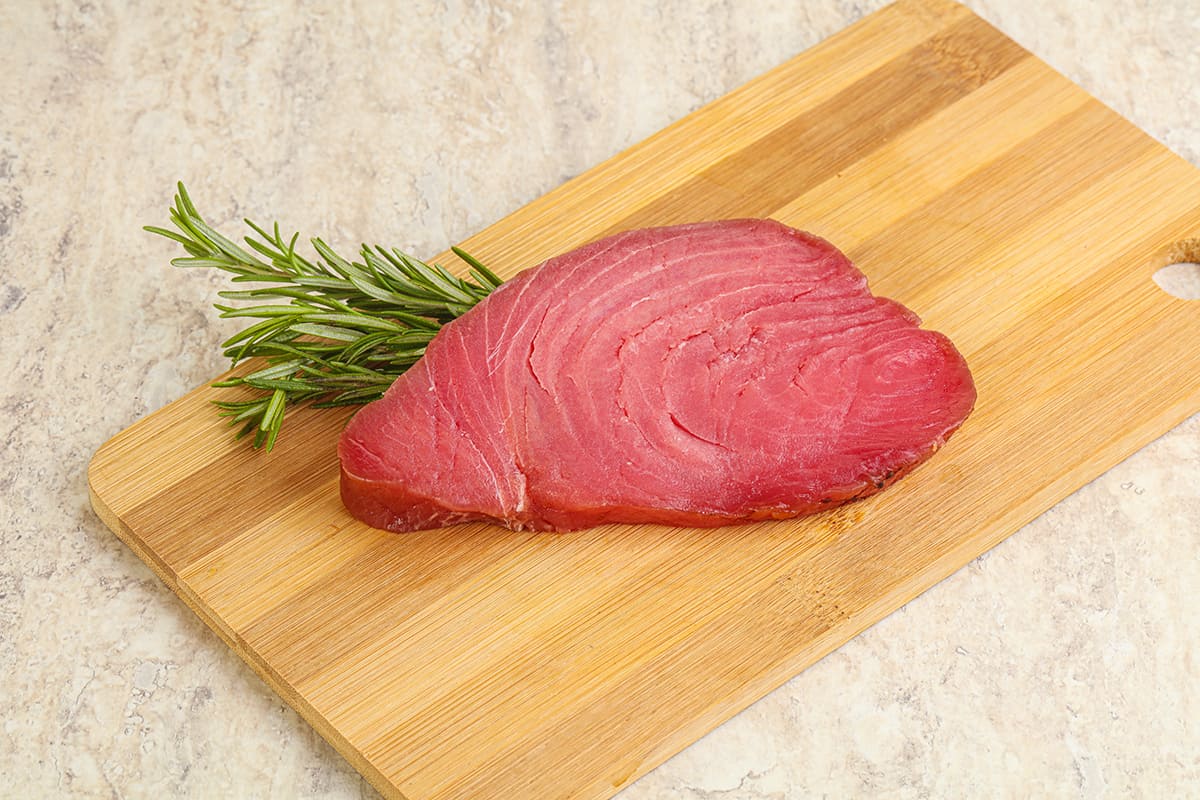
The journey to a flavorful and juicy tuna steak starts way before it touches your grill, skillet, baking tray, what have you. Before you even contemplate which cooking method to employ or what temperature to aim for, you need to decide on the right tuna steak. Here’s how you can do that.
Freshness
The freshness of your tuna steak ultimately impacts the taste and texture of your final dish. You can gauge freshness by examining the following things:
- Smell: Fresh tuna has a mild ocean or seaweed scent. If the steak smells overly fishy, sour, or unpleasant, it’s likely not fresh.
- Touch: Fresh tuna is firm to the touch. It may be old if the flesh doesn’t bounce back when lightly pressed.
- Look: Check for discoloration or drying around the edges, which are signs of aging.
Color
Tuna comes in varying shades, each indicating a different flavor profile and texture:
- Light pink to deep rose: These are usually albacore or yellowfin tunas. They have a milder flavor and softer texture.
- Deep red to almost purple: This is often bigeye or bluefin tuna, known for a strong, rich flavor and firm texture.
Size and Thickness
The size and thickness of your tuna steak directly affect cooking times and doneness.
Thick steaks measure between 1.5 and 2 inches and are ideal for cooking rare to medium steaks. Also, thick steaks are more forgiving if you decide to finish them with a sear.
Tuna steaks measuring 1.5 inches and thinner cook a lot quicker than their thicker counterparts. As such, there’s a very fine line (timewise) between medium and well-done. Aim for the thinner variety if you’re a fan of fully-cooked steaks.
Tips and Tricks
Knowing perfectly cooked steaks’ internal temperature and cooking times will only get you so far. Mastering these tips and tricks will take your tuna steak from being just another fish dish to a meal that wows your family and guests.
1. Proper Preparation
Set the stage for the perfect tuna steak by prepping it the correct way.
- Bring to Room Temperature: Before cooking, let your tuna steak sit out of the refrigerator for about 15-20 minutes to come to room temperature. This helps ensure even cooking.
- Pat Dry: Always pat your steak dry with a paper towel before seasoning or cooking. This step ensures a good sear and prevents sticking.
- Preheat Cooking Surface: Whether you’re grilling, searing, or baking, ensure your cooking surface is preheated. This step is crucial for a good crust and even cooking.
2. Marinating and Seasoning
You can amplify the natural flavors of tuna by marinating and seasoning the steak.
- Marinating: While tuna steak doesn’t require a marinade, using one can enhance its flavor. Keep marinating time under 30 minutes to prevent the acidic components from “cooking” the fish.
- Seasoning: Salt and pepper are often enough, but feel free to experiment with herbs and spices. Sesame seeds, for example, create a nice crust when searing.
3. Perfect Timing
It would be a shame if your carefully planned tuna steak dinner was ruined due to poor timing.
- Cooking Time: Thinner steaks (up to 1 inch) generally need 2-3 minutes per side for medium-rare on high heat. Thicker steaks might need up to 5 minutes per side.
- Resting Time: Let your steak rest for a few minutes after cooking. This allows the juices to redistribute, resulting in a more flavorful steak.
4. Serving Suggestions
Though not directly related to cooking tuna steak, pairing it with the right sides and sauces doesn’t hurt.
- Sides: Pair your steak with vibrant, fresh sides. Grilled vegetables, salads, or a tangy slaw complement the richness of tuna well.
- Sauces: A good sauce can elevate your dish. Soy sauce, wasabi, or a citrus-based sauce pair well with tuna.
